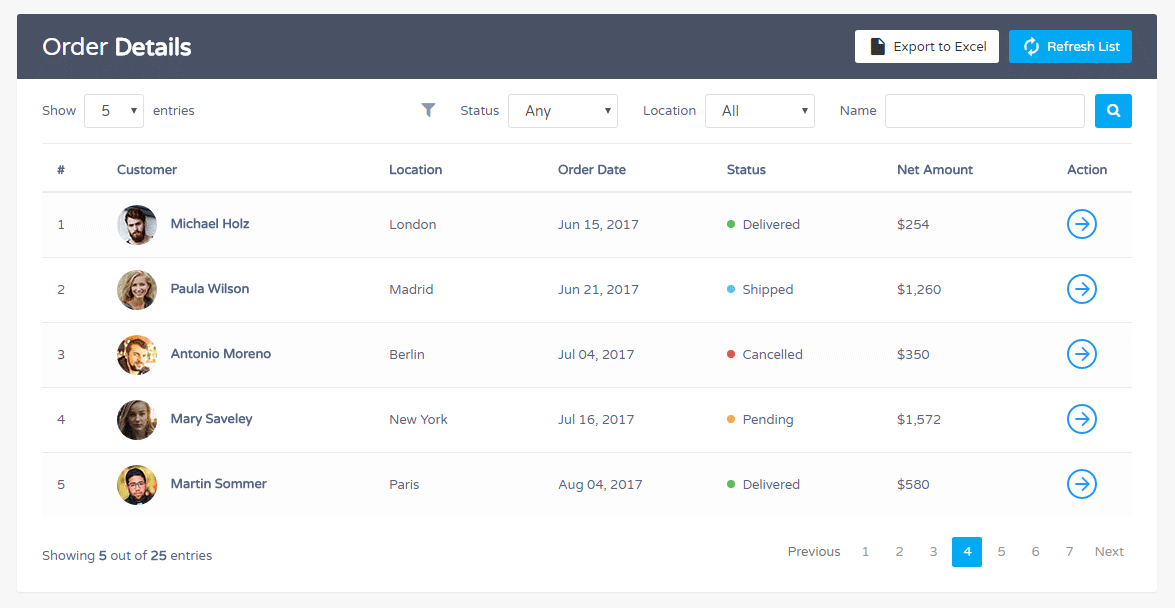

- #Display master page bootstrap model how to#
- #Display master page bootstrap model code#
- #Display master page bootstrap model download#
The download for this tutorial includes a Microsoft SQL Server 2005 Express Edition database named NORTHWIND.MDF in the website's App_Data folder. This requires interaction between the content and master pages because the interface for adding the new record (and its event handlers) are in the content page but the GridView that needs to be refreshed is in the master page.īecause refreshing the master page's display from an event handler in the content page is one of the most common needs for content and master page interaction, let's explore this topic in more detail. To remedy this so that the just-added record is displayed in the master page's GridView on postback we need to instruct the GridView to rebind to its data source after the new record has been added to the database. This may confuse the user.Įven if you disable the GridView's view state so that it rebinds to its underlying data source on every postback, it still won't show the just-added record because the data is bound to the GridView earlier in the page lifecycle than when the new record is added to the database. Assuming that the GridView in the master page has its EnableViewState property set to true (the default), its content is reloaded from view state and, consequently, the five same records are displayed even though a newer record was just added to the database. After filling in the values for the new record's columns, she submits the form. When a user visits the page to add a new record, she sees the five most recently added records displayed in the master page. Consider a master page that includes a GridView that displays the five most recently added records from a particular database table, and that one of its content pages includes an interface for adding new records to that same table. Perhaps the most common example of content and master page interaction occurs when data displayed in the master page needs to be refreshed after some action has transpired in the content page. Those content pages where the login user interface should be suppressed could then programmatically set the ShowLoginUI property to false. For example, the master page might include a public property named ShowLoginUI whose value was used to set the Visible property of the Login control in the master page.
#Display master page bootstrap model how to#
The Multiple ContentPlaceHolders and Default Content tutorial showed how to define the default content for a ContentPlaceHolder in the master page and then how to override it in those pages where the default content was not wanted.Īnother option is to create a public property or method within the master page that indicates whether to show or hide the login interface. While most pages should include a login interface, it should be suppressed for a handful of pages, such as: the main login page ( Login.aspx) the Create Account page and other pages that are only accessible to authenticated users. But what about situations where the majority of pages need to emit a certain output, but a small number of pages need to customize it to show something else? One such example, which we examined in the Multiple ContentPlaceHolders and Default Content tutorial, involves displaying a login interface on each page. When a particular region of a page needs to be configured on a page-by-page basis, we use a ContentPlaceHolder control. Examples of Programmatic Interaction Between a Content Page and its Master Page

In this tutorial we examine how a content page can programmatically interact with its master page in the next tutorial we will look at how the master page can similarly interact with its content pages. While programmatic interaction between a master and content page is less common than the interaction between their declarative markups, there are many scenarios where such programmatic interaction is needed.

Similarly, a master page may interact with its content pages. In addition to defining the markup for the master page's ContentPlaceHolder controls, a content page can also assign values to its master page's public properties and invoke its public methods. What we have yet to examine is how the master page and content page can interact programmatically. Therefore, we have already seen one way in which the master page and one of its content pages can interact: the content page spells out the markup to transfuse into the master page's ContentPlaceHolder controls. When a visitor requests a particular content page, the content and master pages' markup are fused at runtime, resulting in the rendering of a unified control hierarchy. Over the course of the past five tutorials we have looked at how to create a master page, define content regions, bind ASP.NET pages to a master page, and define page-specific content.
#Display master page bootstrap model code#
of the Master Page from code in the Content Page. Examines how to call methods, set properties, etc.


 0 kommentar(er)
0 kommentar(er)
